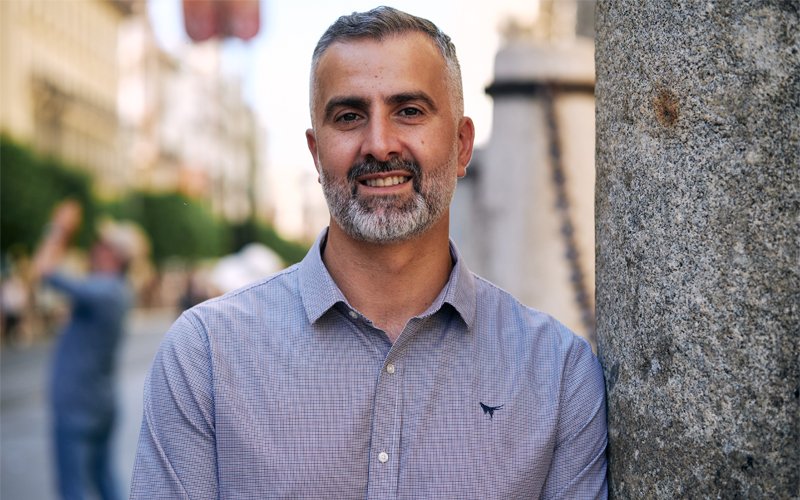7 Aug 2023
With a dual career as an engineer and a musician, flamenco guitarist Paul Bosauder CPEng credits his engineering background with teaching him to be patient, methodical and consistent in his approach to music.
While few teenagers probably ponder fluid dynamics while surfing, being on the water piqued Paul Bosauder’s curiosity in the field and led him into a career in engineering.
“Computer modelling also really caught my attention early on, so that, coupled with my general interest in the sea and how water moves, ultimately led to my doing a Bachelor of Engineering Science, with a focus on fluid dynamics and trying to solve people’s problems using mathematical models.”
Based in Napier, Paul recently established a new business, Sequence, and works at the cutting edge of computational fluid dynamics and non-linear finite element analysis, a field he’s worked in for more than 20 years.
“My key focus areas are in engineering simulation in mechanical and industrial applications. I have specific expertise in a wide range of industries, from power generation and utilities to product design and aerospace, marine, and food processing.”

Photo: La Bohème Poesía Visual
Modelling software tools have come a long way since he started out.
“These developments and the increased availability of computing resources have meant that more complex problems are now solvable, and fewer simplifications are required for complex physics. Recent projects I have been involved with have included high-speed compressible flow of steam, multiphase particle transport and thermal comfort, including transport of water vapour. All of these problems can be solved, thanks to improvements in commercial software and cloud computing services.”
But Paul warns that despite the high-tech software, there are a lot of engineers who can use the tools without understanding what they’re doing.
“Computer modelling is everywhere, from simple Excel spreadsheets to advanced computational fluid dynamics models, and we rely on these tools to make engineering decisions. But the embedded tools have important limitations on the applicable physics, and the art of using these tools to create valid engineering results isn’t always easy to learn.”
He says some engineers are tempted to jump straight into analysis without doing the basic calculations first.
“There is just an infinite number of things that we could be doing to use energy and resources more efficiently. Computer-based modelling is really such an integral part of solving the problems that we have.”
“The more complex the problem, the more experience and expertise is required to be able deliver an engineering result. Experienced analysts will start with simple models that are easily validated and build a complex system slowly out of smaller well-understood sub-systems.”
He advises engineers newer to the field to find an experienced mentor and to seek advice.
“Treat it like an art that has to be learned.”
Paul says computer modelling is key to tackling climate change issues.
“There is just an infinite number of things that we could be doing to use energy and resources more efficiently. Computer-based modelling is really such an integral part of solving the problems that we have.”
Not content with surf and simulations, Paul is also a virtuoso flamenco guitarist, having studied concert flamenco guitar at Escuela Superior de Musica de Catalunya in Barcelona, graduating with a matricula of honours.
“I went on an OE and met a Spanish guitarist and when I saw him play, I thought well, you can’t do any more than that with a guitar. So, I went to Spain and bought a book and a guitar.”
He lived in Spain for nearly 12 years and through his dedicated work on the instrument, eventually had the opportunity to study flamenco guitar with some of Spain’s top maestros, while continuing to further his engineering career.
“I spent a lot of time working remotely, I think I was one of the first guys to do the digital nomad thing, before there was fibre, and it was a bit more challenging.
“I worked for customers all over the world, from Egypt through to Costa Rica and New Zealand, so they were all in different time zones anyway.”
An accomplished flamenco musician, Paul has performed in Spain, Belgium, Switzerland, Greece, France, Lebanon, the United Kingdom, the United States and New Zealand.
He says a recent highlight was recording and releasing his solo album, Tierra y Mar, which topped the New Zealand independent music charts and was sixth on the New Zealand music charts across all genres.
He continues to juggle both careers and tours New Zealand annually with sold-out performances. Paul says his engineering background has taught him to be patient, methodical and consistent in his approach to music.
“Musicians are a mix of mathematicians, athletes and poets – we need knowledge to be able to create, physical stamina and coordination to play our instruments, but also the ability to connect on an emotional level. I think these aspects help me as an engineer.
“Most of what I do is about trust and integrity. As a musician, you must be creative, build trust with your audience and represent yourself honestly. Those aspects are also important in engineering.”




